ناموجود
ARVI Screen-Respiratory Panel Real-TM,sacace-100t
Sacace™ ARVI Screen Real-TM VER 02.02.2021 IVD For in Vitro Diagnostic Use ARVI Screen Real-TM Handbook Multiplex RT-PCR detection and identification of human respiratory syncytial virus (hRSV); human metapneumovirus (hMpv); human parainfluenza virus-1-4 (hPiv); ОС43, Е229, NL63, and HKUI human coronavirus (hCov); human rhinovirus (hRv); human B, C, and E adenovirus (hAdv) and human bocavirus (hBov) REF V57-100FRT 100 Sacace™ ARVI Screen Real-TM VER 02.02.2021 Sacace™ ARVI Screen Real-TM VER 02.02.2021 NAME ARVI Screen Real-TM INTRODUCTION Most acute respiratory diseases are viral infections. Acute respiratory viral infections (ARVI) are the most frequent illnesses experienced by most people globally. Young children have between five and seven of these illnesses per year, with a general decrease in frequency with increasing age. Adults will have about two such illnesses per year. A wide variety of viruses, containing both RNA and DNA, cause acute respiratory infections. The most important viruses are rhinoviruses, coronaviruses, parainfluenza viruses, respiratory syncytial virus, adenoviruses, metapneumoviruses. Rhinoviruses are the most frequent cause of the common cold. They circulate all year and are the major cause for the major autumn increase in respiratory illness. Multiple types of virus cause this rhinovirus outbreak, which is different from the typical outbreak of an infectious disease, in which only one viral type is responsible. Coronaviruses are also important agents of the common cold. Scientists have had difficulty in the laboratory working with these viruses, and the usual methods of virus detection have not yielded complete results. There are at least two major types of coronaviruses, each of which appears to occur over a limited period of time, usually in winter and spring. There are four types of parainfluenza viruses. Parainfluenza type 4 is an agent that is sporadic in occurrence, producing little more than the common cold. As such, its activity is rarely described except when the virus is encountered as part of a comprehensive investigation in which a variety of different agents are sought. In contrast, whenever the severe respiratory illnesses causing hospitalization of young children are studied, parainfluenza types 1, 2, and 3, and RSV, are identified. Both types 1 and 2 most typically cause laryngotracheobronchitis, more commonly called croup. First infection with these viruses is essentially universal by three to four years of age, and, based on the number of infants and young children requiring medical attention, it can be estimated that well over 10 percent of children first encountering these viruses require medical attention specific for this syndrome. Like all respiratory viruses, these agents reinfect repeatedly throughout life, with later infections becoming milder or asymptomatic. Parainfluenza type 3 does not produce this syndrome, but rather one of pneumonia, often with features of obstruction. Again, first infection is universal at an early age, but only occasionally results in the most severe of the potential manifestations of the disease. Reinfection with or without symptoms also recurs throughout life. Sacace™ ARVI Screen Real-TM VER 02.02.2021 INTENDED USE ARVI Screen Real-TM PCR kit is an in vitro nucleic acid amplification test for multiplex detection and identification of specific nucleic acid fragments of pathogens that cause acute respiratory viral infections – human Respiratory Syncytial virus (hRSV) RNA; human Metapneumovirus (hMpv) RNA; human Parainfluenza virus-1-4 (hPiv) RNA; ОС43, Е229, NL63, and HKU 1 human Coronavirus (hCov) RNA; human Rhinovirus (hRv) RNA; human B, C, and E Adenovirus (hAdv) DNA; and human Bocavirus (hBov) DNA – in the clinical material (nasal and oropharyngeal swabs, sputum, aspirate of trachea, bronchoalveolar lavage, bronchial washing fluid, and autopsy material) by using Real-time PCR detection. PRINCIPLE OF ASSAY Kit ARVI Screen Real-TM is based on three major processes: isolation of RNA/DNA from specimens, reverse transcription of the RNA and multiplex Real Time amplification of 5 tubes for each sample. Each tube contains primers directed against regions of ARVI and Internal Control (IC) which serves as an amplification control for each individually processed specimen and to identify possible reaction inhibition. PCR-mix-1-FL hRSv – hMpv PCR-mix-1-FL hPiv 1/3 PCR-mix-1-FL hPiv 2/4 PCR-mix-1-FL hCov PCR-mix-1-FL hAdv – hBov PCR-mix-1-FL hRv Sacace™ ARVI Screen Real-TM VER 02.02.2021 MATERIALS PROVIDED Real Time PCR kit (V57-100FRT) Part N° 1 – “Reverta-L”: Reverse transcription kit • RT-G-mix-1, 20 x 0,01 ml; • RT-mix, 20 x 0,125 ml; • Reverse transcriptase (M-MLV), 2 x 0,06 ml; • TE-buffer, 4 x 1,2 ml. Contains reagents for 110 tests. Part N° 2 – “ARVI Screen Real-TM”: Real Time amplification kit • PCR-mix-1 hRSv – hMpv, 5 x 0,2 ml; • PCR-mix-1 hPiv 1/3, 5 x 0,2 ml; • PCR-mix-1 hPiv 2/4, 5 x 0,2 ml; • PCR-mix-1 hCov, 5 x 0,2 ml; • PCR-mix-1 hAdv – hBov, 5 x 0,2 ml; • PCR-mix-1 hRv, 5 x 0,2 ml; • PCR-mix-2-FRT, 6 x 0,6 ml; • TaqF Polymerase, 6 x 0,06 ml; • Positive Control cDNA hRSv – hMpv (C+hRSv-hMpv), 2 x 0,1 ml; • Positive Control cDNA hPiv 1/3 (C+hPiv 1/3), 2 x 0,1 ml; • Positive Control cDNA hPiv 2/4 (C+hPiv 2/4), 2 x 0,1 ml; • Positive Control cDNA hCov (C+hCov), 2 x 0,1 ml; • Positive Control DNA hAdv – hBov (C+hAdv-hBov), 2 x 0,1 ml; • Positive Control cDNA hRv (C+hRv), 2 x 0,1 ml; • Internal Control DNA C+, 6 x 0,1 ml; • DNA-buffer, 2 x 0,5 ml; • Negative Control (C–), 2 x 1,2 ml;* • Internal Control RNA C+ (IC RNA), 10 x 0,12 ml** Contains reagents for 110 tests. * must be used in the isolation procedure as Negative Control of Extraction. ** add 10 µl of Internal Control RNA during the RNA purification procedure directly to the sample/lysis mixture Sacace™ ARVI Screen Real-TM VER 02.02.2021 MATERIALS REQUIRED BUT NOT PROVIDED Zone 1: sample preparation: • RNA extraction kit • Biological cabinet • Desktop microcentrifuge for “eppendorf” type tubes • 60°C ± 5°C dry heat block • Vortex mixer • Pipettors with aerosol barrier • 1,5 ml polypropylene sterile tubes • Disposable gloves, powderless • Tube racks • 70% Ethanol (freshly prepared mixture of reagent grade 96% ethanol and distilled water) • Acetone • Refrigerator • Freezer Zone 2: RT and amplification: • Real Time Thermalcycler • Workstation • Pipettes (adjustable) • Sterile tips with filters • Tube racks STORAGE INSTRUCTIONS Reverta-L and ARVI Screen Real-TM must be stored at -16°C or below. The kits can be shipped at 2-8°C but should be stored at -16°C or below immediately on receipt. STABILITY ARVI Screen Real-TM is stable up to the expiration date indicated on the kit label. The product will maintain performance through the control date printed on the label. Exposure to light, heat or humidity may affect the shelf life of some of the kit components and should be avoided. Repeated thawing and freezing of these reagents should be avoided, as this may reduce the sensitivity. Components stored under conditions other than those stated on the labels may not perform properly and may adversely affect the assay results. QUALITY CONTROL In accordance with Sacace’s ISO 13485-Certified Quality Management System, each lot is tested against predetermined specifications to ensure consistent product quality. Sacace™ ARVI Screen Real-TM VER 02.02.2021 WARNINGS AND PRECAUTIONS In Vitro Diagnostic Medical Device For In Vitro Diagnostic Use Only The user should always pay attention to the following: • Store extracted positive material (samples, controls and amplicons) away from all other reagents and add it to the reaction mix in a separate area. • Thaw all components thoroughly at room temperature before starting an assay. • When thawed, mix the components and centrifuge briefly. • Use disposable gloves, laboratory coats and eye protection when handling specimens and reagents. Thoroughly wash hands afterwards. • Do not eat, drink, smoke, apply cosmetics, or handle contact lenses in laboratory work areas. • Do not use a kit after its expiration date. • Dispose of all specimens and unused reagents in accordance with local authorities’ regulations. • Specimens should be considered potentially infectious and handled in a biological cabinet in accordance with appropriate biosafety practices. • Clean and disinfect all sample or reagent spills using a disinfectant such as 0.5% sodium hypochlorite, or other suitable disinfectant. • Avoid sample or reagent contact with the skin, eyes, and mucous membranes. If skin, eyes, or mucous membranes come into contact, rinse immediately with water and seek medical advice immediately. • Material Safety Data Sheets (MSDS) are available on request. • Use of this product should be limited to personnel trained in the techniques of DNA amplification. • The laboratory process must be one-directional, it should begin in the Extraction Area and then move to the Amplification and Detection Areas. Do not return samples, equipment and reagents to the area in which the previous step was performed. Some components of this kit contain sodium azide as a preservative. Do not use metal tubing for reagent transfer. Sacace™ ARVI Screen Real-TM VER 02.02.2021 PRODUCT USE LIMITATIONS All reagents may exclusively be used in in vitro diagnostics. Use of this product should be limited to personnel trained in the techniques of DNA amplification (UNI EN ISO 18113-2:2012). Strict compliance with the user manual is required for optimal PCR results. Attention should be paid to expiration dates printed on the box and labels of all components. Do not use a kit after its expiration date. SAMPLE COLLECTION, STORAGE AND TRANSPORT • Sputum, bronchial or tracheal lavage must be treated with the following procedure: Collect sputum into 50 mL single-use PP tubes with a screw cap. In a biological safety cabinet, homogenize samples after mixing with equal volume of 4% NaOH solution. (N-acetyl-L-cysteine may be added if required in the amount of 50-70 mg per sample). Mix intensely with a tube rotator for 5-20 minutes (depending on the density of a sample). Centrifuge samples at 3000 rpm (2800-3000 g) for 15 min and carefully discard the supernatant leaving 500-1000 µl in the tube. Resuspend sediment and transfer it into a 1.5 ml tube. Centrifuge samples at 12000 rpm for 5-10 min, discard the supernatant and use the same 1,5 ml sample tube for DNA isolation from sample sediment. • tissue (~1,0 gr) homogenized with mechanical homogenizer or scalpel, glass sticks, teflon pestles and dissolved in 1,0 ml of saline water or PBS sterile (1 volume of tissue to 1 volumes of saline solution). Vortex vigorously and incubate 30 min at room temperature. Transfer the supernatant into a new 1,5 ml tube; • nasopharyngeal swabs: swab area and place in “Eppendorf” tube with 0,5 ml of saline water or PBS sterile (Sacace Transport medium is recommended). Agitate vigorously. Repeat the swab and agitate in the same tube. Centrifuge at 1000g/min for 5 min. Discard the supernatant and leave about 100 µl of solution for RNA extraction. Specimens can be stored at +2-8°C for no longer than 48 hours, or freeze at -20°C to -80°C. Transportation of clinical specimens must comply with country, federal, state and local regulations for the transport of etiologic agents. Sacace™ ARVI Screen Real-TM VER 02.02.2021 RNA ISOLATION Any commercial RNA/DNA isolation kit, if IVD-CE validated for the specimen types indicated herein at the “SAMPLE COLLECTION, STORAGE AND TRANSPORT” paragraph, could be used. Sacace Biotechnologies recommends to use the following kits: Ribo-Sorb- (Sacace, REF K-2-1) DNA/RNA-Prep (Sacace, REF K-2-9) SaMag Viral Nucleic Acids Extraction kit (Sacace, REF SM003) Please carry out RNA extraction according to the manufacture’s instruction. Add 10 µl of Internal Control (RNA C+ (IC RNA) during isolation procedure directly to the sample/lysis mixture. RT AND AMPLIFICATION Reverse Transcription: 1) Prepare Reaction Mix: for 6 reactions, add 5,0 µl RT-G-mix-1 into the tube containing RTmix and vortex for at least 5-10 seconds, centrifuge briefly. This mix is stable for 1 month at -20°C. Add 6 µl M-MLV into the tube with Reagent Mix, mix by pipetting, vortex for 3 sec, centrifuge for 5-7 sec (must be used immediately after the preparation). (If it is necessary to test less than 6 samples add for each sample (N) in the new sterile tube 20*N µl of RT-G-mix-1 with RT-mix and 1,0*N µl of M-MLV). 2) Add 20 µl of Reaction Mix into each sample tube. 3) Pipette 20 µl RNA samples to the appropriate tube. (If the Ribo-Sorb isolation kit is used as RNA extraction kit, re-centrifuge all the tubes with extracted RNA for 2 min at maximum speed (12000-16000 g) and take carefully supernatant. N.B. don’t disturb the pellet, sorbent inhibit reaction). Carefully mix by pipetting. 4) Place tubes into thermalcycler and incubate at 37o С for 30 minutes. 5) Dilute 1: 2 each obtained cDNA sample with TE-buffer (add 40 µl TE-buffer to each tube). cDNA specimens could be stored at -20o С for a week or at -70o С during a year. Amplification (reaction Mix 25 µl): 1. Prepare required quantity of tubes or PCR plate. Thaw the tubes with the reagents. 2. For carrying out N reactions (including 4 controls: 3 PCR controls and 1 negative extraction control) mix in a new sterile tube: 10*N µl of PCR-mix-1, 5.0*N µl of PCR-mix-2-FRT and 0.5*N µl of TaqF polymerase. Vortex the tube, then centrifuge shortly. Mark the tube with the name of the mix (for example hPiv 1/3). Repeat this procedure with each PCR-mix-1. 3. Prepare for each sample 5 tubes (see image below) and add 15 µl of Reaction Mix into each tube. Sacace™ ARVI Screen Real-TM VER 02.02.2021 4. Add 10 µl of cDNA sample to appropriate tube with Reaction Mix. 5. Prepare for each mix 3 controls: • add 10 µl of DNA-buffer to the tube labeled PCR Negative Control; • add 10 µl of cDNA C+ to the tube labeled Cpos; • add 10 µl of IC DNA to the tube labeled IC DNAPos Table. Sample distribution Create a temperature profile on your instrument as follows: ARVI Screen Real-TM Rotor-type instruments1 Plate or modular type instruments2 Step Temperature, °С Time Cycles Temperature, °С Time Cycles 1 95 15 min 1 95 15 min 1 2 95 10 s 10 95 10 s 54 20 s 54 25 s 10 72 10 s 72 25 s 3 95 10 s 35 95 10 s 54 35 20 s Fluorescence detection* 54 25 s Fluorescence detection* 72 10 s 72 25 s 1 For example Rotor-Gene™ 3000/6000/Q (Corbett Research, Qiagen) 2 For example, SaCycler-96™ (Sacace), CFX/iQ5™ (BioRad); Mx3005P™ (Agilent), ABI® 7300/7500/StepOne Real Time PCR (Applied Biosystems), SmartCycler® (Cepheid), LineGeneK® (Bioer) *Fluorescence is detected is in FAM/Green, JOE/Yellow/HEX/Cy3 and ROX/Orange/TexasRed fluorescent channels. It is not allowed to perform «Rhinovirus» test together with other tests from ARVI Screen Real-TM PCR kit when working with iCycler iQ and iQ5 instruments. Add C+hRSv-hMpv Add C+hPiv 1/3 Add C+hPiv 2/4 Add C+hCov Add C+hAdv-hBov Add C+hRv 1 2 3 4 5 6 7 8 9 10 11 12 13 14 15 16 17 18 Mix «1» – PCR-mix-1 hRSv – hMpv Mix «2» – PCR-mix-1 hPiv 1/3 Mix «3» – PCR-mix-1 hPiv 2/4 Mix «4» – PCR-mix-1 hCov Mix «5» – PCR-mix-1 hAdv – hBov Mix «6» – PCR-mix-1 hRv 6 tubes strip for any clinical sample Strip for negative control (add DNA-buffer) Strip for positive controls (add C+) Strip for Internal control (add IC DNA) Sacace™ ARVI Screen Real-TM VER 02.02.2021 INSTRUMENT SETTINGS Rotor-type instruments Channel Calibrate/Gain Optimisation… Threshold More Settings/ Outlier Removal Slope Correct FAM/Green from 5 Fl to 10 Fl 0.1 0 % Off JOE/Yellow from 4 Fl to 8 Fl 0.1 5-10 % Off Rox/Orange from 4 Fl to 8 Fl 0.1 5-10 % Off Plate- or modular type instruments The threshold line should cross only sigmoid curves of signal accumulation of positive samples and should not cross the baseline; otherwise, the threshold level should be raised. Set the threshold at a level where fluorescence curves are linear and do not cross curves of the negative samples. RESULTS INTERPRETATION The results are interpreted by the software of real time pcr instrument by the crossing (or notcrossing) of the fluorescence curve with the threshold line. Data analysis for each PCR-mix-1 should be performed individually, after withdrawal of tubes corresponding to the PCR-mix-1 used. For the «Rhinovirus» (hRv) test analysis, it is necessary to use ONLY FAM and ROX channels. Table. Correspondence of PCR-mixes-1 and channels for ARVI pathogen detection PCR-mix-1 Fluorescence detection FAM/Green JOE/Yellow/HEX/Cy3 ROX/Orange hRSv-hMpv IC hRSv hMpv hAdv-hBov IC hBov hAdv hRv IC – hRv hPiv 1/3 IC hPiv 3 hPiv 1 hPiv 2/4 IC hPiv 2 hPiv 4 hCov IC NL-63, 229E HKU-1, ОС 43 Principle of interpretation of results: – DNA/RNA of an ARVI pathogen is detected if the Ct value for this sample is determined in the results grid in the corresponding channel. The fluorescence curve for this sample should cross the threshold line in the interval of exponential growth of the fluorescence curve. – DNA/RNA of an ARVI pathogen is not detected if the Ct value for tested sample is not determined (absent) in the results grid in the corresponding channel and if the Ct value in the results grid in the FAM channel does not exceed the specified boundary value (Ct ≤ 32). – Result is considered to be invalid if the Ct for the tested sample is not determined (absent) in the corresponding channel for ARVI pathogens and if the Ct value in the FAM/Green channel is absent or exceeds the specified boundary value (Ct > 32). In this case the analysis of the sample should be repeated from the DNA/RNA extraction step. Sacace™ ARVI Screen Real-TM VER 02.02.2021 The results of analysis are considered reliable only if the results obtained for positive and negative controls of amplification and negative control of extraction are correct (see Table below). Table. Results for controls Control Stage for control Ct value in channel FAM/Green JOE/Yellow/HEX/Cy3 ROX/Orange/TexasRed Detection of IC Detection of ARVI pathogen Detection of ARVI pathogen NCE RNA extraction Pos (< 32) Neg Neg NCA Amplification Neg Neg Neg IC DNA C+ Amplification Pos (< 28) Neg Neg Pos C+ Amplification Neg Pos (< 26)* Pos (< 26) * Positive Control cDNA hRv is not determined in the JOE channel. PERFORMANCE CHARACTERISTICS Analytical specificity The specificity of this kit was confirmed by investigation of the following reference strains: human Rhinoviruses (13, 15, 16, 17, 21, 26, and 29 types). The specificity of the kit was also proved during examination of clinical material with subsequent confirmation by sequencing the amplification products of the following pathogens: Parainfluenza virus-1-4; human Coronaviruses ОС43, Е229, NL63, and HKUI; human Adenoviruses B, C, and E; and human Bocavirus. It is also possible to discriminate between closely related enteroviruses in the reaction for rhinovirus RNA detection. The adenovirus detection reaction is not intended for typing because of possible interaction with closely related adenoviruses of other types. Non-specific reactions between the components of the PCR kit and cDNA/DNA of other viral (Influenza A and B viruses, Urbani SARS-associated Coronavirus (Frankfurt), Coronaviruses causing feline infectious peritonitis (F1, F2, and F5) and swine transmissible gastroenteritis (TGEV1, TGEV8, and TGEV9), Herpes viruses, Cytomegalovirus, Enteroviruses (Echo9 and Echo30), and 60 samples of cerebrospinal fluid from meningitis patients containing Enterovirus RNA) and bacterial (Streptococcus spp., Staphylococcus aureus, Mycoplasma influenza, Chlamydophila pneumonia, Haemophilus influenza, Moraxella catarrhalis, and Legionella pneumophila) agents that cause acute respiratory diseases as well as normal nasal and oropharyngeal human microflora and human cDNA/DNA were not observed. Analytical sensitivity The sensitivity of ARVI Screen Real-TM is not less than 1000 copies/ml. Sacace™ ARVI Screen Real-TM VER 02.02.2021 TROUBLESHOOTING 1. Weak or absent signal of the IC (Fam (Green) channel): retesting of the sample is required. • The PCR was inhibited. ⇒ Make sure that you use a recommended RNA extraction method and follow the manufacturer’s instructions. ⇒ Re-centrifuge all the tubes before pipetting the extracted RNA for 2 min at maximum speed (12000-16000 g) and take carefully supernatant. Don’t disturb the pellet, sorbent inhibit reaction. • The reagents storage conditions didn’t comply with the instructions. ⇒ Check the storage conditions • The PCR conditions didn’t comply with the instructions. ⇒ Check the PCR conditions and for the IC detection select the fluorescence channel reported in the protocol. • The IC was not added to the sample during the pipetting of reagents. ⇒ Make attention during the RNA extraction procedure. 2. Weak (Ct > 37) signal on the Joe (Yellow)/Cy3/HEX or Rox/Orange/TexasRed channel: retesting of the sample is required. 3. No signal with the positive controls of amplification. • Incorrect programming of the temperature profile of the used instrument; • Configuration of the PCR reaction was not right. • The reagents storage conditions didn’t comply with the instructions • The reagent kit is expired. ⇒ Check programming of the used instrument, storage conditions, the expiration date of the reagents and then repeat PCR. 4. Joe (Yellow)/Cy3/HEX or Rox/Orange/TexasRed signal with Negative Control of extraction. • Contamination during RNA extraction procedure. All samples results are invalid. ⇒ Decontaminate all surfaces and instruments with sodium hypochlorite and ethanol. ⇒ Use only filter tips during the extraction procedure. Change tips among tubes. ⇒ Repeat the RNA extraction with the new set of reagents. 5. Any signal with Negative PCR Control. • Contamination during PCR preparation procedure. All samples results are invalid. ⇒ Decontaminate all surfaces and instruments with sodium hypochlorite and ethanol or special DNA decontamination reagents. ⇒ Pipette the Positive controls at the end. ⇒ Repeat the PCR preparation with the new set of reagents. Sacace™ ARVI Screen Real-TM VER 02.02.2021 KEY TO SYMBOLS USED * SaCycler™ is a registered trademark of Sacace Biotechnologies * CFX™ and iQ5™ are registered trademarks of Bio-Rad Laboratories * Rotor-Gene™ is a registered trademark of Qiagen * MX3005P® is a registered trademark of Agilent Technologies * ABI® is a registered trademark of Applied Biosystems * LineGeneK® is a registered trademark of Bioer * SmartCycler® is a registered trademark of Cepheid Sacace Biotechnologies Srl via Scalabrini, 44 – 22100 – Como – Italy Tel +390314892927 Fax +390314892926 mail: info@sacace.com web: www.sacace.com List Number Caution! Lot Number Contains sufficient for tests For in Vitro Diagnostic Use Version Store at NCA Negative Control of Amplification Manufacturer NCE Negative control of Extraction Consult instructions for use C+ Positive Control of Amplification Expiration Date IC Internal Control
حمل و نقل کالا
درخواست محصول
.فقط مشتریانی که این محصول را خریداری کرده اند و وارد سیستم شده اند میتوانند برای این محصول دیدگاه(نظر) ارسال کنند.
محصولات پیشنهادی
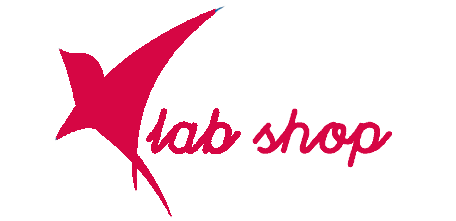

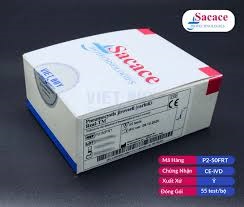








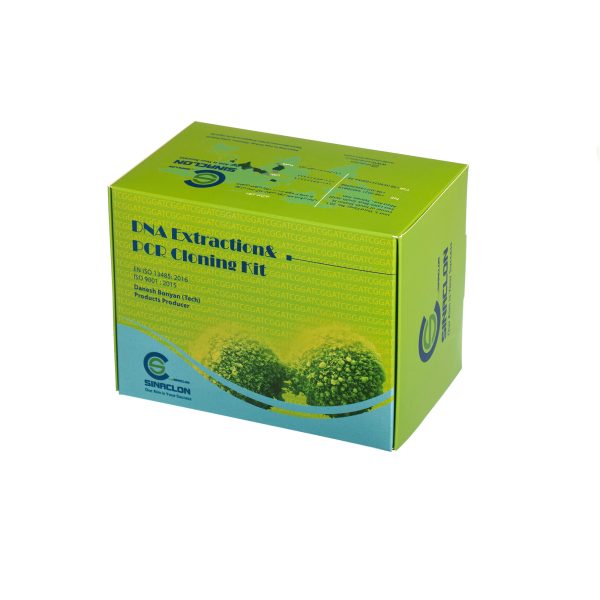
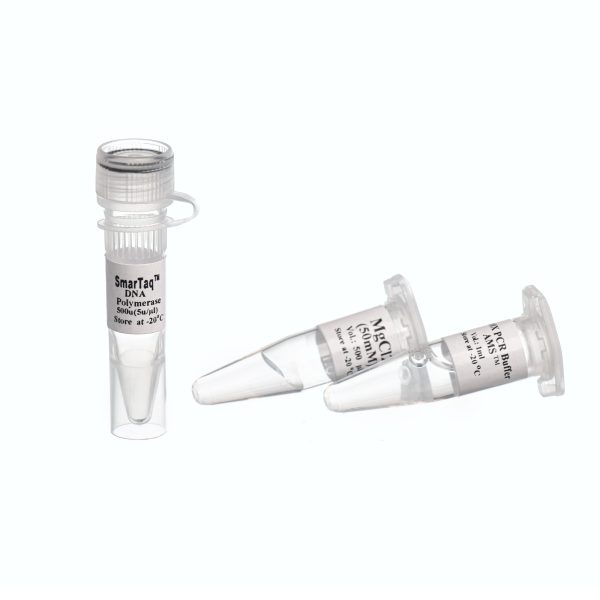
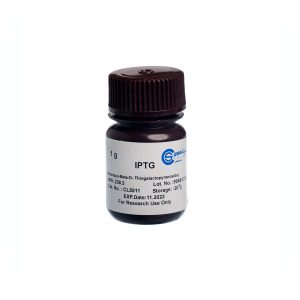
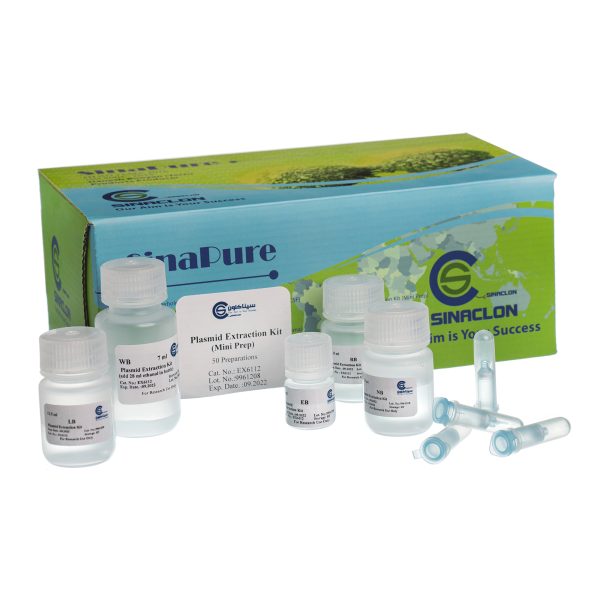
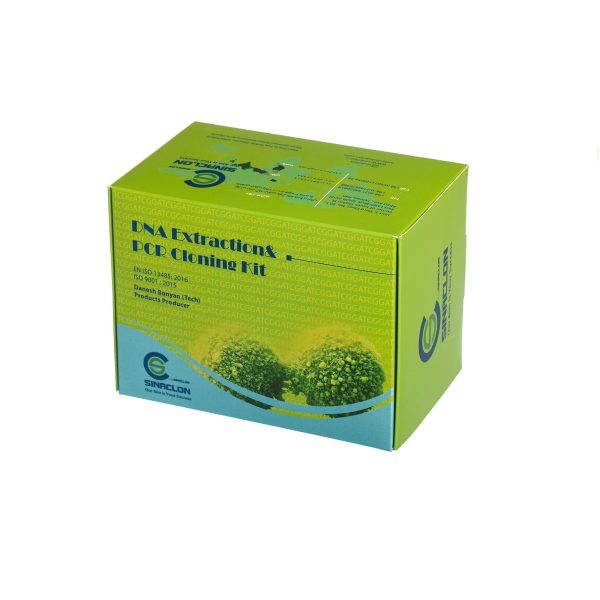


نقد و بررسیها
هنوز بررسیای ثبت نشده است.